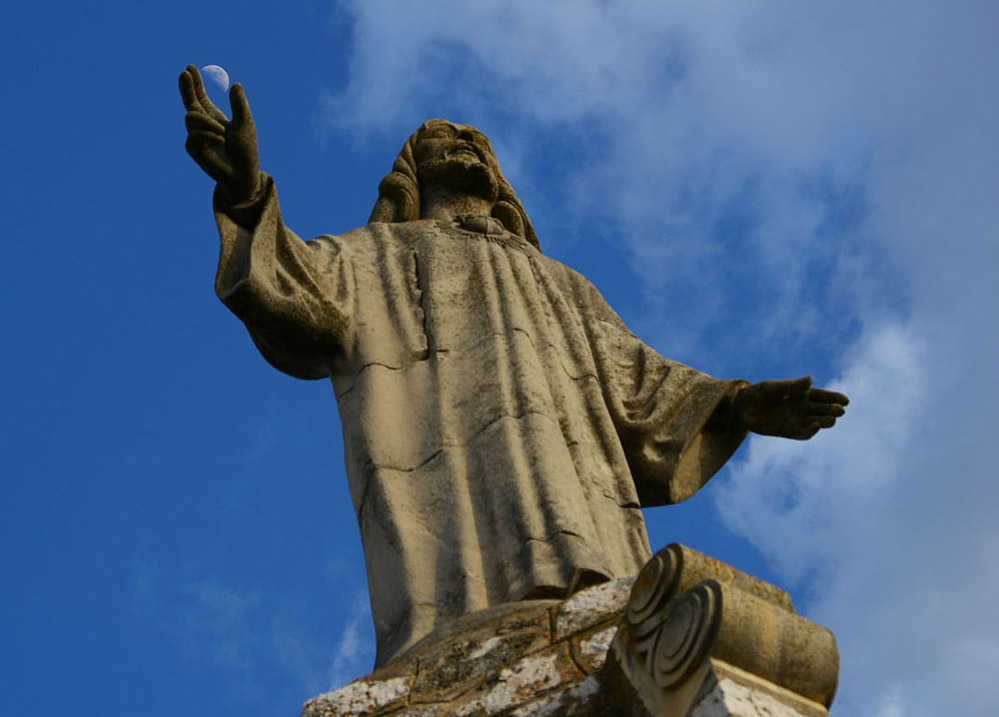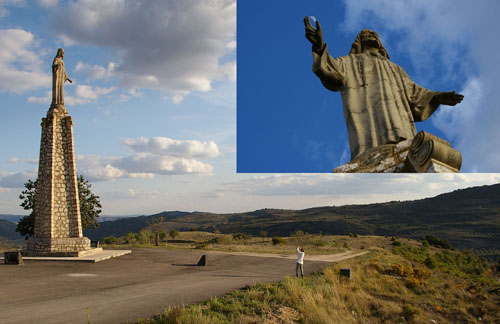April 16, 2008
Don't Squeeze!

image by Enrique Luque Cervigón, Pastrana, Spain
The Pope's visit to the US - and Enrique's image - give an excuse to put the Moon into a cosmic perspective - it is a small body in our solar system, with one star, 8 planets (phewy on Pluto), and 4 moons being larger. Of course, there are millions to billions of smaller moons, asteroids, comets and dust particles, but they mean little to us, unless they are on an collisional orbit. In the debate about what characterizes a planet, Mark Sykes of Tucson's Planetery Science Institute recently wrote in Science that it is roundness (as long as the object isn't orbiting another planet). Round objects are large enough that their gravity compresses them into spheres. Almost all round objects are relatively big and the larger ones have had radioactive heating leading to volcanism, tectonics, atmospheres, erosion, fluvial processes and the possibilities of life. These are characteristics of the prototypical planet, Earth. Our Moon, stuck in a status-demoting moon's orbit, has had radioactive heating, volcanism and tectonism, and even cosmic erosion, but is too weak gravitationally to have kept water and other gases, and thus has no atmospheric, fluvial (other than lava flows) and life processes. At least its not a sherd, like the the moons of Mars and dozens of other satellites. It has some dignity, and as the namesake of a class of world deserves the respect of a capital M.
Chuck Wood
Technical Details
Pentax istDL digital reflex camera and a 70mm lens, f8, ISO200 and 1/350 seg exposure. The statue of Christ is high of a hill dominating Pastrana, a small, medieval and very nice village.
Related Links
Enrique's website

Yesterday's LPOD: How Did It Get There?
Tomorrow's LPOD: Petavian View
COMMENTS
(1) As St. Francis of Assisi wrote in 1224 in his Canticle of the Sun, "Praised be my Lord for our sister the Moon, and for the stars, which God has set clear and lovely in heaven." - Aethrae, Andrew Martin SFO
COMMENTS?
Register, Log in, and join in the comments.



